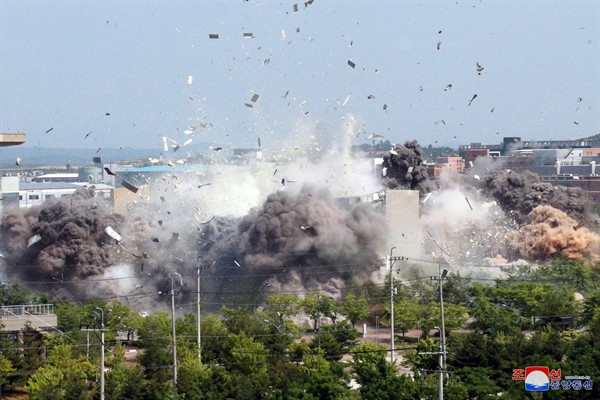What a difference two years makes. The spring and summer of 2018 saw an extraordinary rapprochement between the two Koreas, as their leaders held successive face-to-face meetings, culminating in a landmark visit by South Korean President Moon Jae-in to Pyongyang. The flurry of diplomacy produced a number of joint declarations, agreements, hotlines and other confidence-building measures, including an inter-Korean liaison office in Kaesong, just 6 miles into North Korean territory from the Demilitarized Zone. It was the first full-time communication channel and served as a de facto embassy between the two sides, which are technically still at war having not signed a peace agreement after the Korean War ended in 1953.
Much of the progress of the past two years came crashing down this week when North Korea used controlled explosives to destroy the liaison building, which had been largely unused since January due to the coronavirus pandemic. The blast, powerful enough to shatter windows of nearby buildings, was clearly designed to send a message.
“The decision to demolish the liaison center is significant in the sense that it was done dramatically, and with finality,” Frank Aum, senior expert on North Korea at the United States Institute of Peace, said in an email. Pyongyang could have simply mothballed the building, he added, but the fact that it instead chose a path of no return “certainly suggests there are more provocations coming down the pike.”

